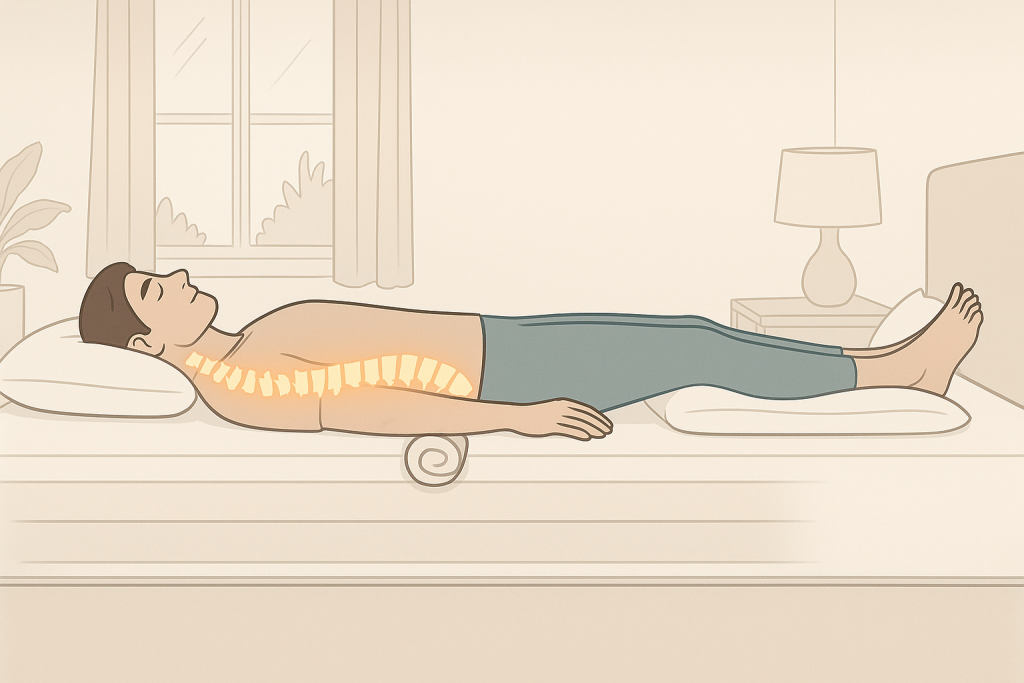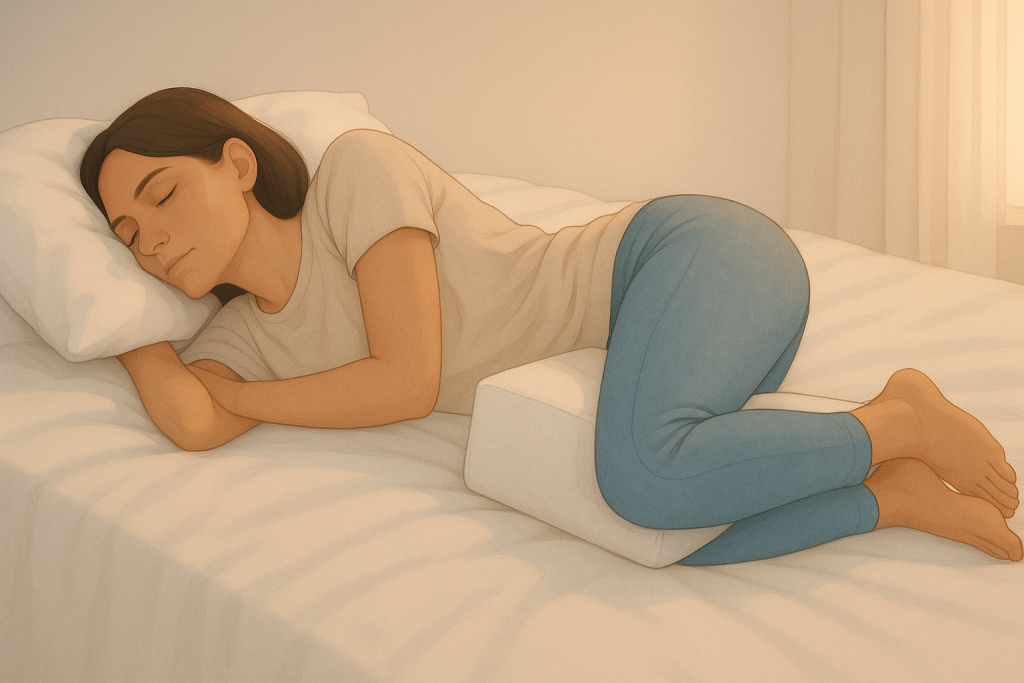We all know that sleep is vital for our overall health—but did you know that how you sleep is just as important as how much you sleep? Your sleeping position can have a significant impact on your spinal health. A poor posture during sleep can cause or exacerbate back and neck pain, contribute to long-term spinal issues, and even affect the quality of your rest.
In this blog, we’ll explore the science behind spinal alignment, examine the best and worst sleeping positions, and offer practical tips to improve your posture and protect your spine.
Why Sleeping Position Matters
Your spine is not a straight line—it has natural curves at the neck (cervical), mid-back (thoracic), and lower back (lumbar). When you sleep, your posture should ideally support these curves to prevent strain on your vertebrae, discs, muscles, and ligaments.
If your spine is misaligned while you sleep:
- Muscles and joints remain tense instead of relaxed.
- Nerves may get compressed, leading to tingling or pain.
- You may toss and turn more, reducing sleep quality.
According to the Sleep Foundation, a neutral spine position helps reduce pain and allows for proper rest and recovery during the night.
Best Sleeping Positions for Spinal Health
1. Back Sleeping (Supine Position) – Best for Overall Spinal Alignment

This is widely considered the best sleeping position for spinal health because it evenly distributes your body weight and minimizes pressure points.
How to optimize it:
- Use a medium-loft pillow to support your neck.
- Place a pillow under your knees to maintain the natural lumbar curve.
- Try a small rolled towel under your lower back for added support.
Tip: If you snore or have sleep apnea, consult your doctor before sleeping on your back.
2. Side Sleeping – Best for Snorers and Pregnant Women

Side sleeping is the most popular position and can help with issues like acid reflux and sleep apnea. It also reduces pressure on your spine if done properly.
How to optimize it:
- Sleep with your legs slightly bent (not tightly curled).
- Place a firm pillow between your knees to align hips and reduce pressure on the lower spine.
- Use a high-loft pillow to keep your neck straight.
Bonus: Left-side sleeping improves circulation and is especially beneficial during pregnancy.
3. Fetal Position – Ideal for Herniated Discs

This curled-up posture can be especially comforting and may benefit people with herniated discs by opening up the space between spinal vertebrae.
How to optimize it:
- Don’t curl up too tightly—this can restrict breathing.
- Place a pillow between your knees to avoid twisting the lower back.
Worst Sleeping Position for Spine: Stomach Sleeping (Prone Position)
Stomach sleeping flattens the natural curve of your spine and forces your neck into a twisted position, which may lead to:
- Chronic neck stiffness
- Lower back pain
- Shoulder misalignment
If you must sleep on your stomach:
- Use a very thin or no pillow under your head.
- Place a pillow under your pelvis to reduce lumbar strain.
Choosing the Right Mattress and Pillow
The foundation of healthy sleep posture begins with your bed setup.
Mattress:
- A medium-firm mattress is ideal for maintaining spinal alignment.
- A mattress that is too soft may cause sagging, leading to misalignment.
- Too firm, and it can put pressure on your hips and shoulders.
Pillow:
- Back sleepers: Use a thinner pillow to maintain neck alignment.
- Side sleepers: Use a firm pillow with enough loft to fill the space between your neck and shoulder.
- Stomach sleepers: Use a flat pillow or skip it altogether.
Extra Tips to Protect Your Spine During Sleep
- Stick to a regular sleep schedule: Your muscles and spine recover best when sleep is consistent.
- Practice stretching and core strengthening exercises: A strong core supports your spine.
- Avoid falling asleep in awkward positions on the couch or recliner.
- Support your lower back during long periods of sitting to prevent poor posture during the day, which can carry over into sleep.
Signs Your Sleeping Position May Be Hurting You
- Morning stiffness or pain in the back or neck
- Frequent waking due to discomfort
- Tingling or numbness in limbs
- Feeling unrested despite sleeping 7–8 hours
If you’re experiencing any of the above, it’s worth evaluating your sleep setup and posture.
Conclusion
Your spine supports your entire body—treat it well by choosing a sleep position that promotes proper alignment. A few small adjustments to your sleeping posture, pillow, and mattress can lead to big improvements in both comfort and long-term spinal health.
“It’s not just how much sleep you get—it’s how well your body rests while doing it.”




